Meta Quest Pro vs. Quest 2: Should you upgrade?
Does face/eye tracking, color passthrough, self-tracked controllers, and better performance justify paying triple the price?

Everything and the kitchen sink
The Meta Quest Pro takes the Quest template and adds face & eye tracking, full-color passthrough, self-tracked controllers with no dead zones and next-gen haptics, a much more comfortable halo strap, twice as much RAM, and new QLED lenses with local dimming zones, improved FOV, and color fidelity. It's a significant, exorbitantly-priced upgrade.
Pros
- Boosted Snapdragon XR2+ performance
- QLED pancake lenses with local dimming and higher ppi
- Full-color passthrough for mixed-reality experiences
- Comfortable halo strap for long-term use
- Improved IPD slider
- Fantastic Pro controllers
Cons
- VERY expensive
- Only two-hour battery life
- Relies on another computer for best work experience

Not being replaced
The bestselling Meta Quest 2 hasn't been replaced by the newer Quest Pro. It's definitely a 2020 headset with hardware that could use a refresh, but it still is the best standalone VR gaming experience available today at a reasonable price. Just be ready to buy some accessories to improve on the stock experience, or else wait for the upcoming Meta Quest 3.
Pros
- Much more affordable
- Works with same gaming library
- Compatible with Quest Touch Pro controllers
- Longer battery life, esp. with accessories
- 120Hz gaming
- Slightly lighter
Cons
- Black & white passthrough
- No face/eye tracking
- Front-heavy design with poor default strap/ facial interface
- Only 6GB of RAM
When gamers hear about a new console with improved graphics, visuals, and exclusive software, they'll spend well over asking price just to get one — just look at the PS5 resale market. But the Meta Quest Pro is a unique case. It's absolutely a major upgrade on the Oculus Quest 2 in features and design, but most Quest owners may not need some of the improvements past the initial novelty. Because despite the fact that it can play Quest games and has the best graphics of any mobile VR device, the Quest Pro is built with "professionals" in mind rather than gamers.
It's been one year since Facebook became Meta and teased its new "Project Cambria" VR headset, and our Quest Pro review explains all the ways that Meta succeeded in building an excellent device. But for many buyers, they'll nevertheless want to buy the Meta Quest 2, despite missing out on cool features like color passthrough and eye tracking that any gamer would enjoy.
But we won't try to bias your decision. Our VR expert Nick Sutrich is testing the Quest Pro daily after years of experience with the Quest 2, and we're sharing all of the Meta Quest Pro vs. Quest 2 details you need to know before deciding whether or not to upgrade.
Meta Quest Pro vs. Quest 2: Price and accessories

The Meta Quest Pro costs a whopping $1,500 for the headset, two Quest Touch Pro controllers and stylus attachments, a partial light blocker facial interface, and a 45W USB-C charging dock.
The Quest Touch Pro controllers, which are actually compatible with the Quest 2 and can be bought separately, cost $300. And most Quest charging docks, like the one from Anker, cost around $100. So the actual cost of the headset is about the same as other premium VR headsets like the Valve Index. But since you can't buy the Pro by itself, it's still pricier than any other consumer VR headset on the market.
As for other Quest Pro accessories, you may also want to buy a full light blocker for VR games, earbuds for the dual 3.5mm ports, a case, and a portable charger for taking the Pro on the road. Combining all these, you'll add another couple hundred dollars to the cost of the device.
The renamed Meta Quest 2 recently got a $100 price increase to both its 128GB and 256GB models; they now cost $400 and $500, respectively. Most people only need the 128GB model because cloud saves allow you to delete games without losing progress.
Get the latest news from Android Central, your trusted companion in the world of Android
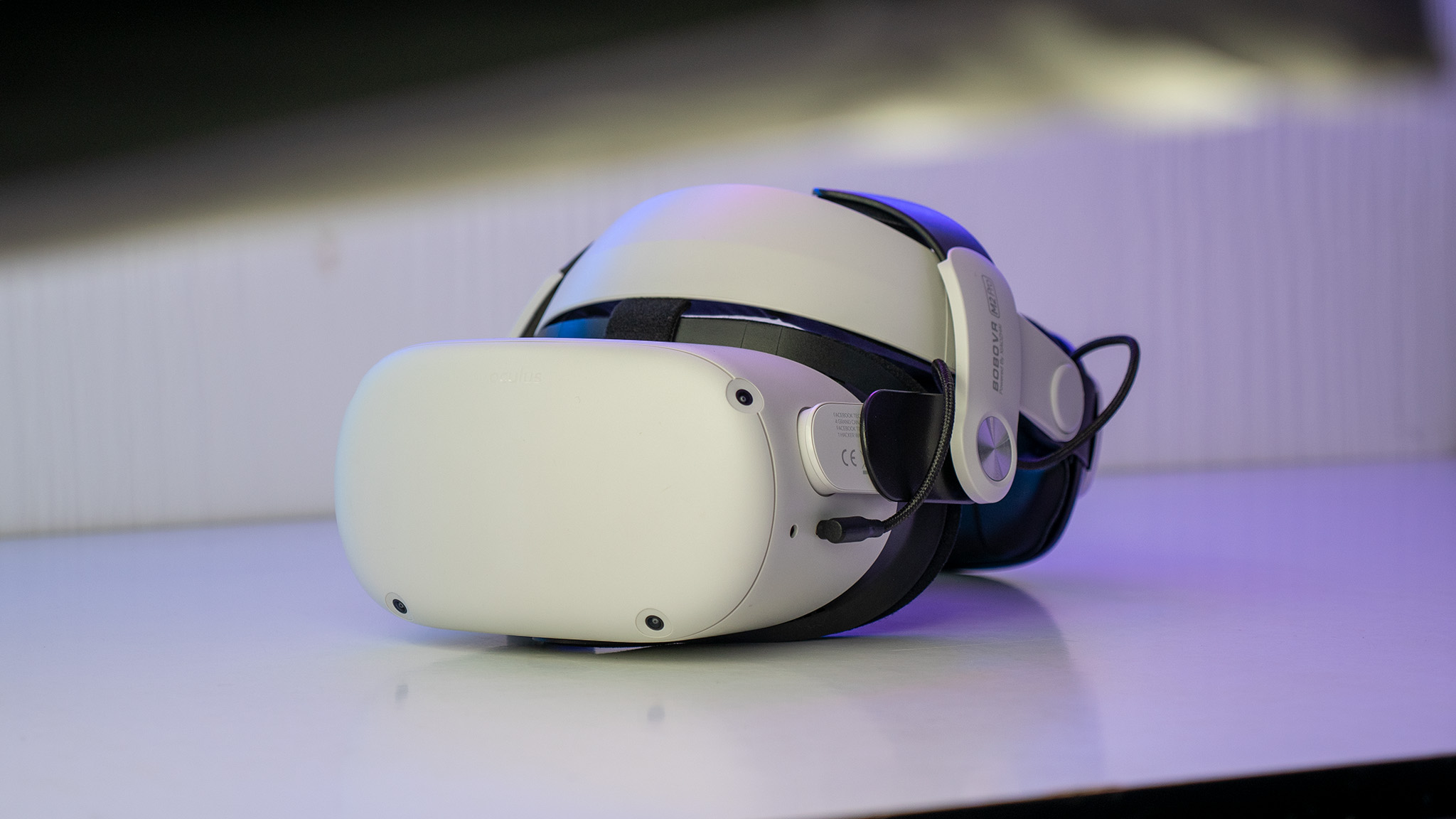
So that's a $1,100 savings (plus another $100 or so in taxes) to choose the Quest 2 over the Quest Pro — except that you'll also need to buy hundreds of dollars in Quest 2 accessories to make it a more comfortable experience.
The default Quest 2 strap is very uncomfortable due to the headset's front-heavy design, so you need either the official Elite Strap or third-party alternatives to fix it. By the time you've bought a case to store it, a battery pack, replacement face covers, a Link cable to connect to your PC, controller mods, and all the other accessories to improve on its deficiencies, you'll end up spending several hundred dollars more.
But the key is that many of these are optional, and you can spread the cost out for months after purchase instead of paying for everything upfront.
Meta Quest Pro vs. Quest 2: A radical redesign
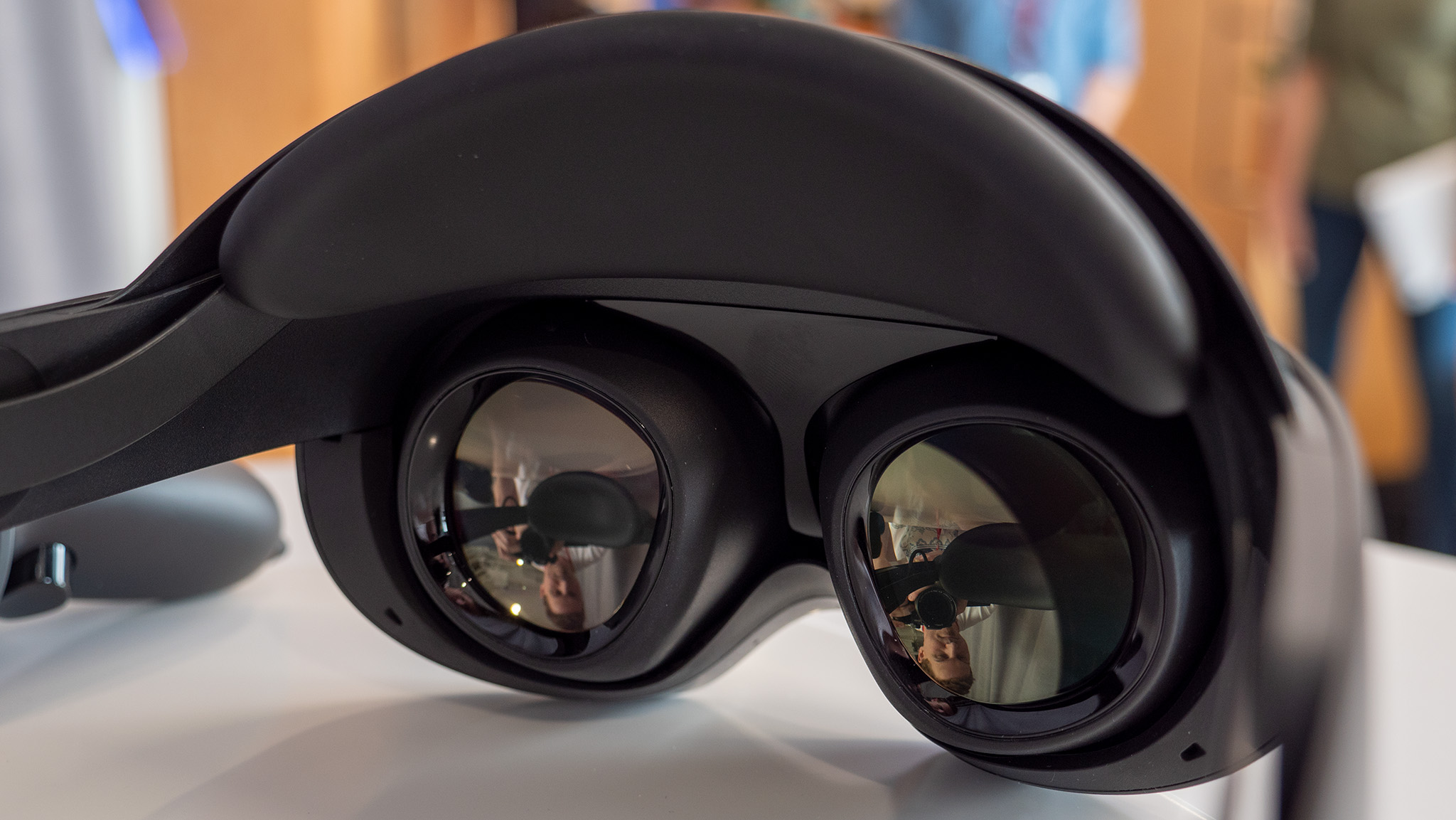
The Quest 2 design has plenty of shortcomings. Most of its weight, including the battery and LCD lenses, sits in the front, and the default cloth-and-velcro strap barely supports the weight, so it can't keep the headset in place without tightening the Quest 2 uncomfortably close to your face. The default facial interface caused rashes until Meta issued a recall. The IPD adjustment tool is too rigid, not supporting eye widths beyond a few settings.
This all makes the Quest 2 sound worse than it is; it did get lighter than the original Quest, and with a proper strap replacement to adjust the weight, it becomes downright comfortable for long periods. But the Quest Pro redesign relies on pancake lenses that reflect light in such a way that they can sit significantly closer to your eyes. Standard LCD lenses need extra space to give your eyes a proper FOV, which means more heavy plastic to house that space. The Quest Pro pancake lenses shrink its width, and combined with the battery pack placed in the rear of the head strap, gives it a much more balanced feel.
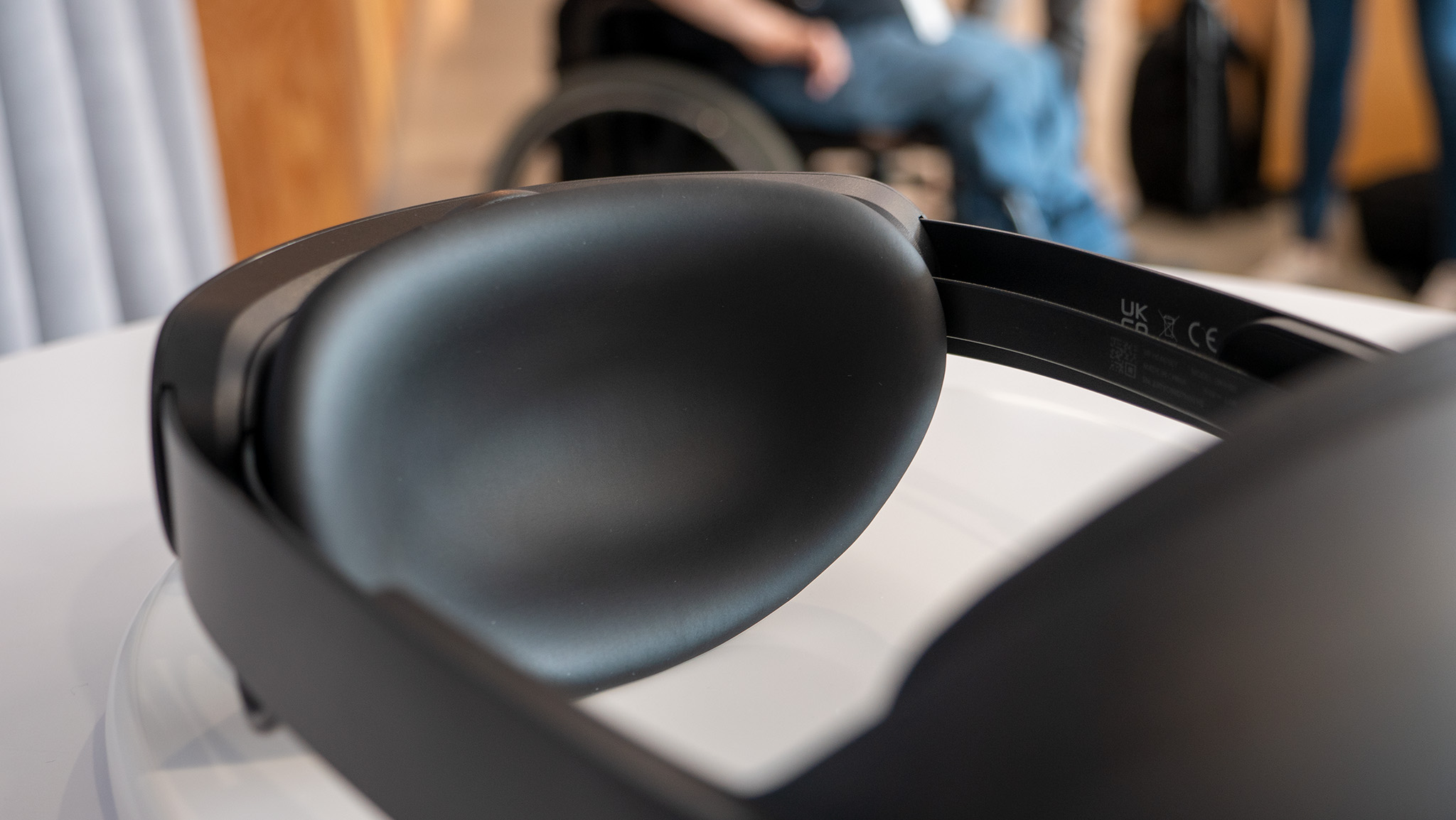
Our Quest Pro tester says the head strap "looks and acts a lot like a traditional halo strap," with adjustable forehead padding that allows for a more comfortable fit than the Quest 2's top strap. Otherwise, the Quest Pro essentially has an elite strap design, with an adjustment wheel on the back that lengthens the strap to slide your head inside and then tightens to accommodate your head size.
The forehead pad has its own adjustment wheel to change the distance between it and the lenses, in addition to the traditional wheel for pushing the strap's back backwards to fit your head and forward to tighten the fit. And it has a flexible strap on the inside that's more comfortable than the Quest 2's rigid straps. Basically, our tester found that it makes the Quest Pro something you could comfortably wear "on a daily basis," which is vital if you plan to use it for work as well as play.
The other Quest Pro upgrade is the IPD slider. Not only does it allow for a wider range of eye widths (55-75mm vs. just 56-70mm on the Quest 2), it "smooth slides in sub-mm increments," so you can perfectly customize the width to your face. Plus, like the Pico 4, the Quest Pro uses eye tracking to measure your personal IPD and tells you if you're on the wrong setting, so you know exactly what width to use without having to find a ruler and measure yourself.

I mentioned before that the Quest Pro comes with a partial light blocker. This is because the Pro's glasses-like design leaves your sides and bottom fully exposed to light, and you may prefer having your periphery blocked off while focusing during mixed-reality meetings or work sessions. You magnetically snap them on the left and right side of the headset, making them easy to attach or remove.
If you want full light blockers (pictured above), you'll have to pay extra for them. But whether you use the full or partial blockers, they're essential for immersive VR gaming; seeing the real world is natural for mixed reality experiences but very distracting for VR.
Meta Quest Pro vs. Quest 2: A specs and performance boost

Meta allegedly designed the Quest Pro as a "Chromebook for your face," so it needed more power than the Quest 2's Snapdragon XR2 mobile chipset and 6GB of RAM could offer. Plus, the Quest Pro has more cameras, including an RGB camera for full-color passthrough and face/eye tracking cameras inside the headset, which required more power to run.
To achieve this, Meta commissioned Qualcomm to create a new XR2+ Gen 1 chip, backed by double the RAM as the Quest 2. Meta says that "instead of stacking memory and processing blocks vertically in the SoC like previous chips, Meta and Qualcomm worked together to lay them side-by-side to help with increased air flow and heat dissipation efficiency, which enabled significantly better performance."
In terms of how much faster the Quest Pro is for gaming, developers can implement foveated rendering to deliver a performance boost and up to 30% increase in resolution by focusing the best visuals wherever the gamer's eyes are looking. But if devs of the best Quest 2 games don't patch in foveated rendering, the extra RAM probably won't deliver a significantly better performance, according to what experts like John Carmack have said.
Instead of gaming, the Quest Pro is specifically designed to recreate a portable office space, so it needs to be able to map and remember the objects in your room, show constant full-color passthrough with four times the Quest 2's black-and-white passthrough pixels, show your real-time eye movements, and facial expressions to others in virtual boardrooms, and wirelessly project your computer's display in Horizon Workrooms.
The Quest 2 can technically access some of the same work tools, but it's truly not something you'd want to wear for hours a day outside of VR gaming experiences. It's not as comfortable to wear, and the black-and-white passthrough doesn't refresh fast enough to comfortably look at your surroundings.
| Header Cell - Column 0 | Quest 2 | Quest Pro |
|---|---|---|
| Display | LCD | QLED with pancake-style lenses |
| Resolution | 1832x1920 per eye | 1832x1920 per eye |
| Refresh rate | 72–120 Hz | 72-90Hz |
| IPD adjustment | Manual with 3 presets (58, 63, 66mm) | Manual from 55mm to 75mm, sub-mm increments with eye tracking measurement |
| Processor | Qualcomm Snapdragon XR2 Gen 1 | Qualcomm Snapdragon XR2+ Gen 1 |
| Memory and storage | 6GB RAM, 128-256GB UFS 3.1 storage | 12GB RAM, 256 GB UFS 3.1 storage |
| Battery and Charging | 2-3-hour battery life, 2.5-hour charge | Up to 2 hour battery life, 2 hour maximum charging time |
| Sensors | Proximity sensor, gyroscope, accelerometer | Proximity sensor, Ambient light sensor, Accelerometer, Gyrometer, Magnetometer, Barometer |
| Cameras | Four cameras for headset/controller tracking | Five cameras for room scale; three cameras for eye tracking; two cameras for face tracking; three per controller for self-tracking |
| Audio | Integrated stereo speakers, microphone, one 3.5mm jack, spatial audio support | Integrated stereo speakers, microphone, dual 3.5mm jacks, spatial audio support |
| Connectivity | Wi-Fi 6, Bluetooth 5, USB Type-C 3.2 Gen 1 | Wi-Fi 6E, Bluetooth 5.2, USB Type-C 3.2 Gen 2 |
| Controllers | Oculus Touch 3rd gen | Quest Touch Pro |
| Hand tracking | Yes | Yes |
| Face/eye tracking | No | Yes |
| Weight | About 710 grams with strap | 722 grams |
| Dimensions | 295.5 mm (with strap) x 102 mm x 142.5 mm | 265mm (with strap) x 127mm x 196mm |
| Color | White | Black |
| Price | $400-$500 | $1,500 |
Visually, both Quest headsets have the same resolution, though the Quest Pro has about 10º extra field of view compared to the 90º Quest 2. The Quest Pro has QLED lenses with 500 individual zones for local dimming, which solves one of the biggest visual problems with the Quest 2: its mediocre black levels with make dark gaming environments look dull and gray.
Both headsets use an RGB stripe sub-pixel configuration, which lets VR lenses pack pixels in closer together. But Meta says the Quest Pro has a 1.3x-larger color gamut and 37% more pixels-per-inch than the Quest 2, thanks to the pancake lenses. Perhaps the only downside to the Quest Pro lenses is that Meta doesn't seem to support 120Hz on them, whereas the Quest 2 will have 120Hz gaming support for all games after it was previously an experimental feature.
In practice, our review Nick Sutrich has found that the Quest Pro reduced the "annoying circular lines and god rays," two obnoxious visual quirks that Quest 2 owners will be familiar with even if they didn't know what they were called. And unlike the Quest 2 lenses, which have a tiny sweet spot where everything outside of it looks blurrier, the Quest Pro looks clearer across its entire lenses.
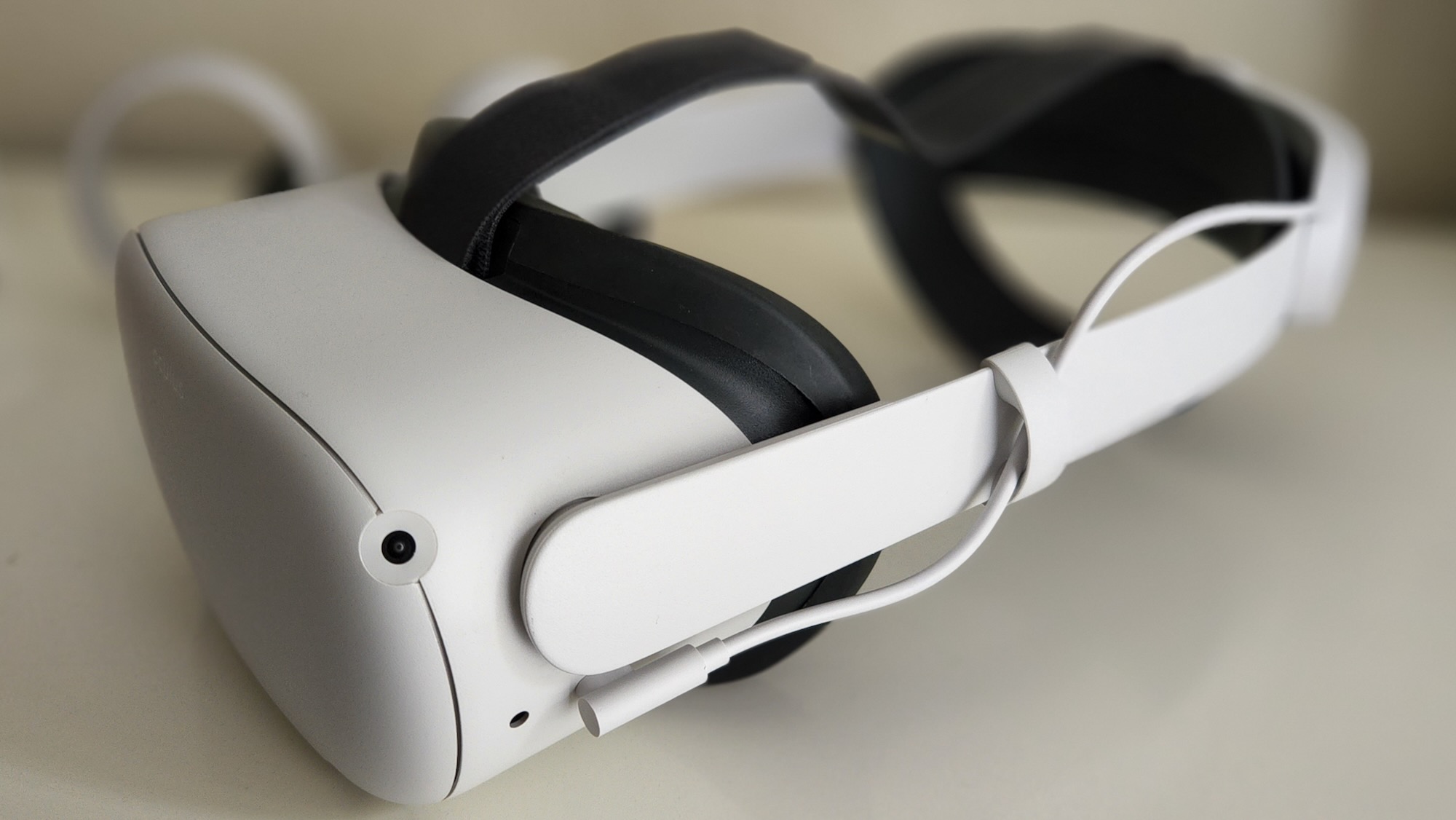
Neither Quest headset is particularly long-lasting, usually only lasting about 2 hours across a regular session. The Quest 2 has battery packs that are either embedded in straps or attach directly to the headset's charging port or strap, which can solve this problem somewhat. With the Quest Pro, we've already seen owners unofficially mod the headset by using velcro to strap Quest 2 batteries onto the Pro; and our Quest Pro reviewer used this AMVR battery necklace that drapes around your neck and basically triples its natural battery life. Otherwise, we're hoping more official Ques Pro battery mods will be sold in the future.
Both devices have solid audio quality, though the Quest Pro wins the battle. Compared to the Quest 1, the Quest 2 had "louder volume, better bass, fuller sound, and even better 3D audio." But move on to the Quest Pro, and it has a "full range of sound, palpable bass," and generally sounds better than its predecessor.
Interestingly, Meta returned to two 3.5mm audio jacks with the Quest Pro, which prevents dangling wires but ensures most headphones won't work with the headset. You still can't use Bluetooth headphones due to the sound latency, so you'll need to buy the official $50 Quest Pro earphones for now.
One temporary downside to the Quest Pro is that it's dealing with wi-fi speed issues, causing it to fall well below the Quest 2 in Mbps. You can disable DFS on your router as a temporary fix, and Meta says it is working to solve the issue. But at the moment, streaming PC experiences isn't as reliable as it should be.
Meta Quest Pro vs. Quest 2: Brand new controllers
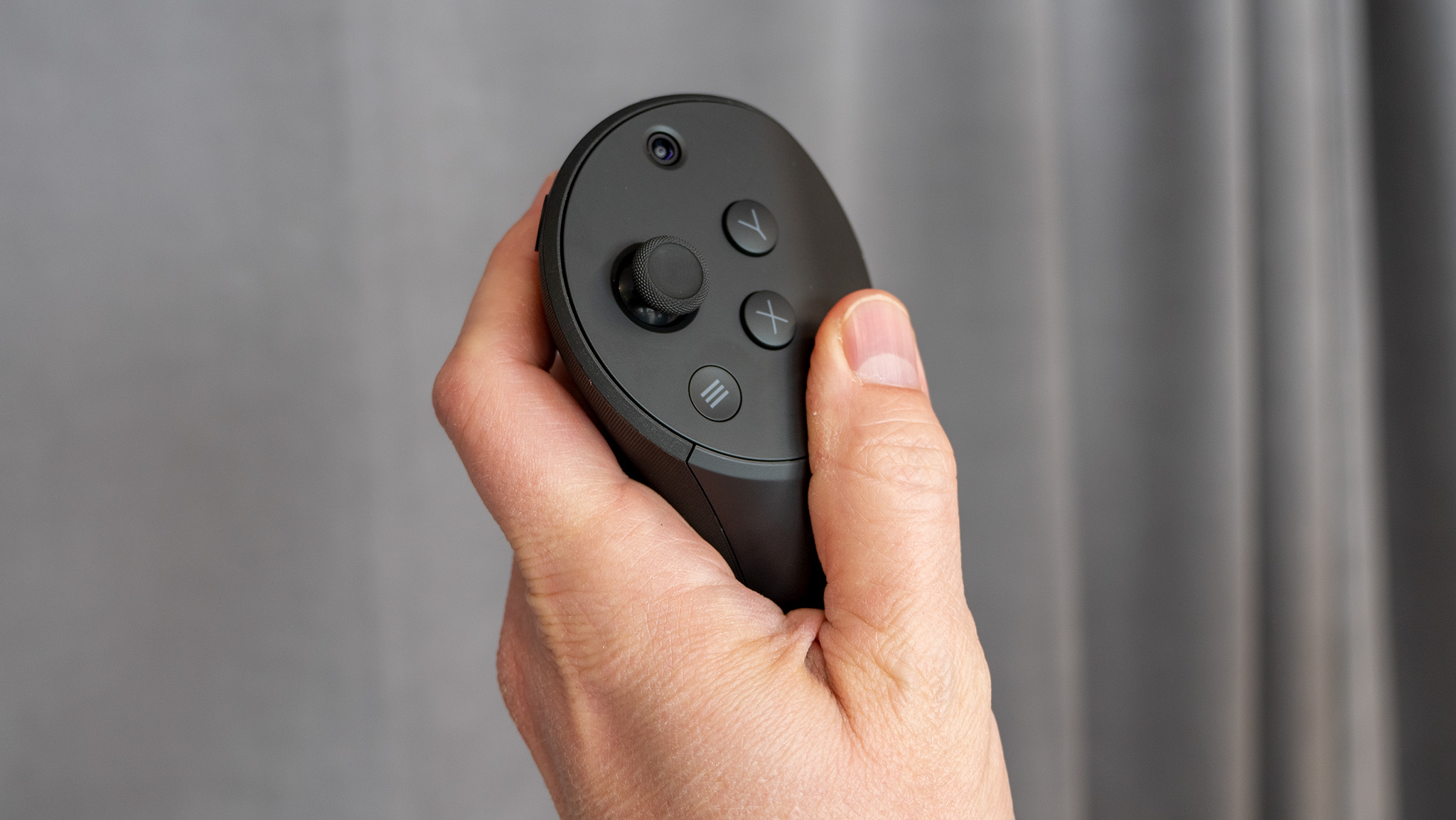
The Quest 2 Oculus Touch controllers have the standard halo design that lets the headset's inside-out cameras track their movement, as well as advanced haptics and a thick-but-sturdy build that could usually handle getting accidentally slammed into objects or walls.
The Quest Touch Pro controllers have one immediately obvious difference: No tracking ring! It has three camera sensors built into itself, powered by a Snapdragon 662 chip used by lots of budget phones in 2020. And as much as we like the standard Touch controllers, the Pro controllers have TruTouch Haptics and can track your individual finger positioning for a more natural, realistic experience in-game.
The Touch Pro controllers even have a hidden touchpad in the thumbrest, though it may be some time before developers actually use it for anything. But you can create "precision pinch" movements that let you "grab" objects in a game perfectly naturally, and then "feel" it in your hand.
Because the headset can easily track the controllers' position without relying on cameras, which means you can hold them above your head or behind your back without losing tracking — a consistent problem with the Quest 2, which relies on line-of-sight. In the video below, Nick Sutrich tested the Quest Touch Pro controllers for bow-and-arrow combat and found them significantly more responsive and accurate.
One major benefit of the Quest 2 Touch controllers is that they run on one AA battery and can typically last months at a time before needing to swap in a new one. The Quest Touch Pro controllers have built-in rechargeable batteries, which saves you money on batteries but also means they only last about 2-6 hours before needing a recharge.
The other is that the Quest 2 Touch controllers' rings unofficially protect your hands if you accidentally slam the controller into a wall, while the ringless Pro controllers leave your fingers exposed. Plus, the ring gives you an easy way to attach mods like knuckle grips, while you can't do that as easily with Pro controllers.
Still, we wrote a guide explaining why you should buy Quest Pro controllers for the Quest 2, as the upsides far outweigh the downsides. The Quest 2 and Pro controllers will cost you $700 total instead of $1,500, so you're still saving money.
Meta Quest Pro vs. Quest 2: Games and software
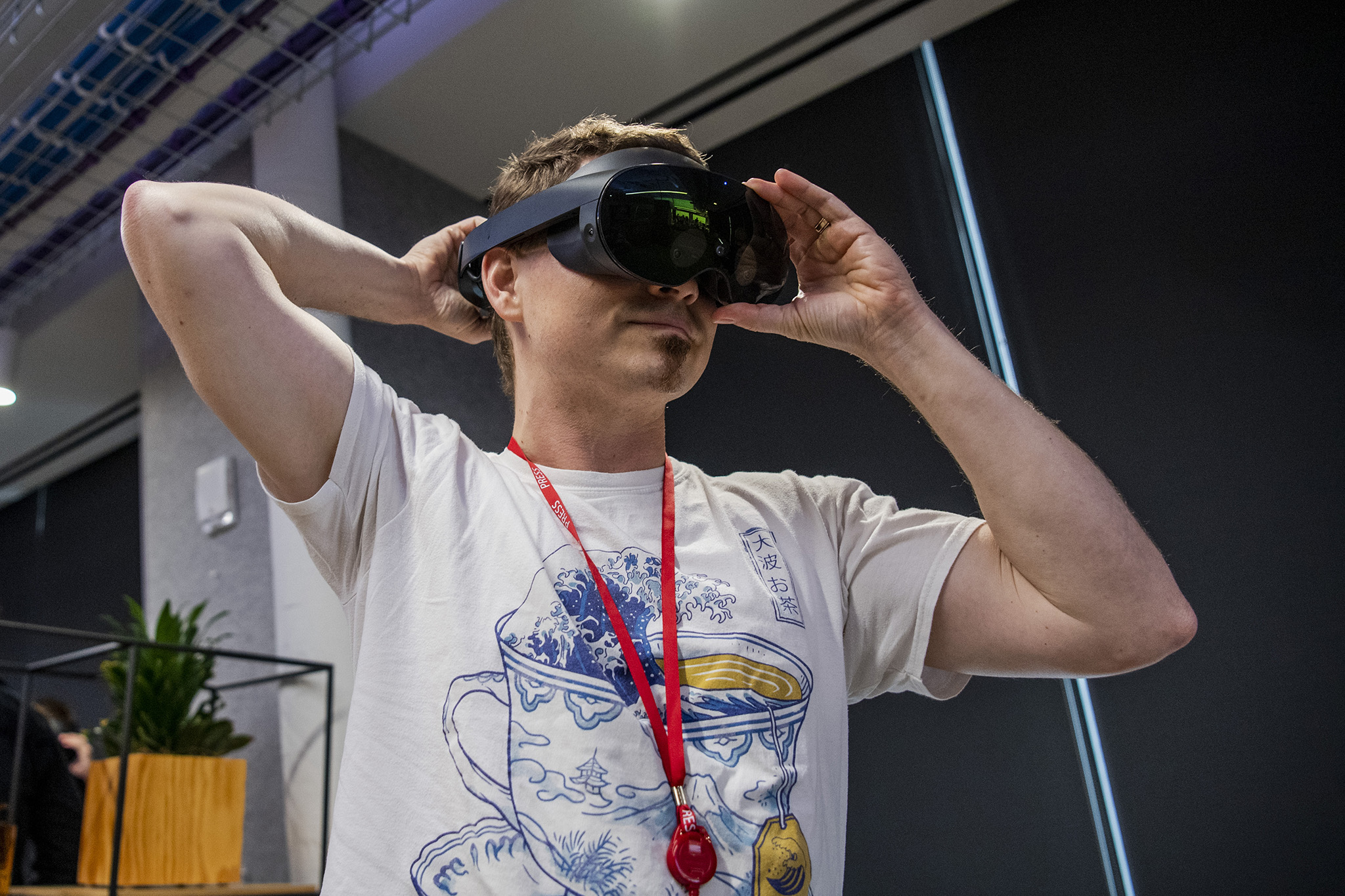
Both headsets will run the same Quest 2 games. Meta set a precedent by adding Quest 2 "enhancements" to the Quest 1 gaming library, and we've seen at least one Quest 2 game get a Quest Pro enhancement with foveated rendering. But developers aren't required to improve their games with Pro packages; it may depend on how well the Pro headset sells.
Both headsets technically support mixed-reality experiences, but only the Quest Pro has superior full-color passthrough. Our reviewer did find some flaws: colors are muted, sunlight through windows looks distractingly bright, and "the frame rate is closer to a cinematic 24fps than anything representing real life." Despite this, he still loves having the option to walk through your house wearing the headset with full view of your surroundings and no lag or blurring, making it a more social headset than the closed-off Quest 2.
We also know that the Quest Pro and Quest 2 will add native Microsoft apps like Teams, Office 365, and Azure, as well as the option to stream Windows 365 on your headset. But working on the Quest 2, when you can only see your keyboard through grainy, laggy black-and-white passthrough, just isn't sustainable for long periods. The Quest Pro is quite simply the better option.
If you plan to meet colleagues or friends in virtual reality, face and eye tracking on the Quest Pro will give your digital avatar an actual personality to go with your voice. And we know the Pro will get exclusive software like Autodesk for CAD/ 3D modeling and collaboration, as well as cool gaming experiences like I Expect You to Die: Home Sweet Home that turn your surroundings into a booby-trapped escape room.
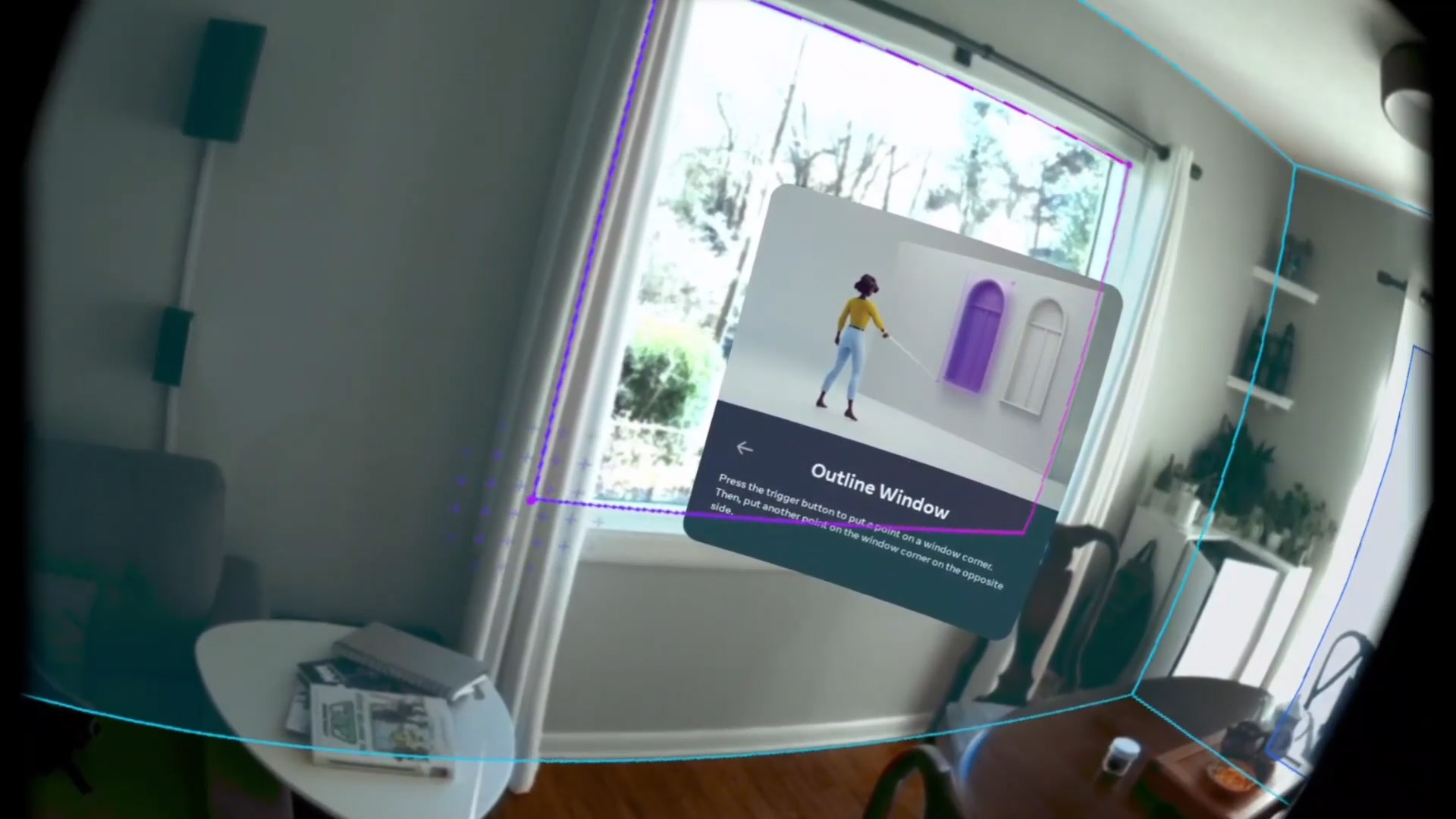
The Quest 2 lets you insert your couch or desk into VR permanently, though it'll look gray and grainy due to its limited cameras. With the Quest Pro, you can set up your room for mixed-reality by adding your walls, windows, doors, and other furniture to your environment. You can then use mixed-reality to enjoy certain experiences like Demeo, which lets you play D&D in mixed reality by placing its dungeon map on your dining room table.
Researchers are also using the Quest Pro for useful business applications like Nanome. This app lets scientists look at virtual recreations of molecular structures and manipulate them, and it's being used to study the COVID-19 pandemic. The mixed-reality passthrough is making the Quest Pro handy for long-term study in a way the Quest 2 can't.
Meta Quest Pro vs. Quest 2: Which should you buy?

Right now, virtual reality's main use case is gaming, and the Meta Quest 2 is one of the best gaming consoles available today. The Meta Quest Pro is a mixed-reality device showcasing all of the company's ambitious ideas for expanding beyond gaming into its Metaverse ideals.
The Quest Pro hardware has impressed us thus far, but it's still early days. Many software features are still being developed, and we don't know how many Quest 2 games will add foveated rendering. You can use the Quest Pro for work, but it's better as an accessory to your work laptop than as a standalone device. So you have to decide if you want to pay for this and whatever laptop you buy next.
At the same time, the two-year-old Quest 2 is reaching the end of the line. Next year, Meta will launch the Quest 3, which itself will have full-color passthrough and a superior XR2 Gen 2 chip with 12GB of RAM, according to leakers. If you can hold off a year, the Meta Quest 3 may be a better purchase than either the Quest Pro or Quest 2, even if it lacks eye/face tracking and the Pro's more comfortable design.
Whether you want the affordable Quest 2 or have the money to upgrade to the Quest Pro so you don't miss out on any new features, we've enjoyed using both headsets. Neither is a bad choice; just keep in mind that both have their downsides.

Meta wants you to spend your work days in a virtual reality headset, so it designed a device that's supremely comfortable to wear without compromising on performance, packed with a decent selection of productivity software.

Despite all of its hardware failings, the Oculus Quest 2 is an affordable device that delivers a ton of delightfully fun VR experiences, and it still holds up to scrutiny today. Don't go Pro if the standard Quest will still make you happy.

Michael is Android Central's resident expert on wearables and fitness. Before joining Android Central, he freelanced for years at Techradar, Wareable, Windows Central, and Digital Trends. Channeling his love of running, he established himself as an expert on fitness watches, testing and reviewing models from Garmin, Fitbit, Samsung, Apple, COROS, Polar, Amazfit, Suunto, and more.


